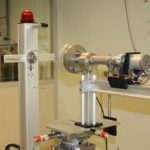Laboratory presentation
Our jobs
Dose metrology
The methods used to establish national standards must be adapted to the nature and intensity of the radiation concerned. They are based on measurement techniques such as calorimetry, ionometry and chemical dosimetry. These methods make it possible to characterize the laboratory reference beams in dosimetric terms (absorbed dose, kerma). The LNHB thus has sources of beta radiation, gamma photons (60Co, 137Cs, 241Am) and a medical type accelerator (Bremsstrahlung photons and high-energy electrons). The primary standards established in this way are made available to users by means of adapted dosimetric transfer techniques: ionization chambers, electronic paramagnetic resonance dosimetry (EPR) in alanine, thermoluminescence, etc.
Radioactivity metrology
The variety of the emitted radiations and the physical forms of the sources make it necessary to adapt the measurement procedures for establishing national standards in each case: defined geometry method, in which the detector is exposed to a limited and known fraction of the radiation, 4 π geometry methods in which the detector is exposed to all the radiation, coincidence method, applicable to radionuclides emitting simultaneously at least two types of radiation (β-γ, α-γ…)…
These methods use different types of detectors (proportional counters, semiconductors, scintillators, etc.) and cover a wide range of activity according to emitter types (α, β, γ, X).
These methods use different types of detectors (proportional counters, semiconductors, scintillators, etc.) and cover a wide range of activity according to emitter types (α, β, γ, X).
-
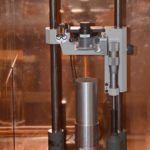
Gamma-ray spectrometry -

Alpha spectrometry -

Neutron sources measurement -

Liquid scintillation counting / TDCR -
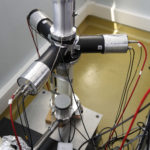
Coincidence counting -
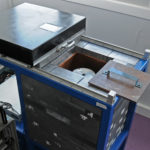
Well-type detector -

Radon standards -

Triple counter for gas measurement -

Cryogenic detectors -

Beta spectrometry -
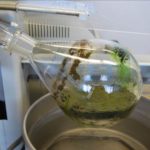
Environmental matrices -

Preparation of radioactive sources -

Ionization chambers -

SOLEX / SOLEIL
What is the LNE-LNHB?
The Laboratoire National Henri Becquerel (LNHB), located on the CEA Paris-Saclay site, is a division of the CEA LIST.
It is one of the national metrology institutes federated by the Laboratoire National de métrologie et d’Essais (LNE) since 2005, when the French government entrusted this body with the supervision of French metrology. In this capacity, the LNE delegated to the LNHB the role of National Metrology Laboratory in the field of ionizing radiation, a role it had already held since the creation of the Bureau National de Métrologie in 1970.
This role essentially consists in implementing the units of the International System of Units (SI) in this field. Metrological consistency is based on the dual national and international dimension of the calibration chain, which is the fundamental structure of metrology. On the one hand, it is a question of ensuring consistency between the national reference standards of the various signatory countries of the Mutual Recognition Agreement (CIPM MRA), thus giving them their character of primary standards. On the other hand, through transfer or calibration standards, these national standards are used to connect the users’ measuring instruments in each country. It thus provides users with access to metrological references for ionizing radiation, within the framework of strictly established traceability.
The resulting activities are: R&D to develop new standards and devices for radiation detection, maintenance of existing reference standards and international comparison, contribution to the quality and consistency of measurements at national level, education and transfer to users.
The LNHB perimeter includes measurements of radioactivity (activity expressed as becquerel and its derivatives), neutron source emission rate (n. s-1) and dosimetry of charged photons and particles (absorbed dose, air kerma and dose equivalents respectively expressed in gray and sievert).
The Laboratoire de Métrologie de l’Activité (LNHB-MA) is in charge of primary metrology for the measurement of activity and the transfer of references to accredited calibration laboratories and users in the fields of application such as: nuclear medicine, nuclear industry, environmental monitoring. To address these problems, the LNHB-MA technical platform includes the means of preparing primary and secondary sources and measurements adapted to the diversity of physical forms of radionuclides, their period and their decay scheme.
The LNHB-MA is also in charge of the evaluation and the publication of nuclear and atomic data associated with the decay of radionuclides (periods, energies and emission intensities of the different radiations emitted, decay schemes…).
The Laboratoire de Métrologie de la Dose (LNHB-MD) is in charge of primary metrology for the dose and transfer of references to accredited calibration laboratories and users of application areas such as radiotherapy, radiodiagnostics, radiation protection and industrial irradiation. The LNHB-MD technical platform includes radiation sources adapted to these different problems, as well as equipment and dosimetric techniques adapted to the transfer of references in these fields. The activities dedicated to the field of radiotherapy are located on the DOSEO platform.
The LNHB also has calculation means (clusters) essentially intended for the implementation of Monte-Carlo codes of radiation interaction in matter for the determination of correction factors and the design of detection devices.
It is one of the national metrology institutes federated by the Laboratoire National de métrologie et d’Essais (LNE) since 2005, when the French government entrusted this body with the supervision of French metrology. In this capacity, the LNE delegated to the LNHB the role of National Metrology Laboratory in the field of ionizing radiation, a role it had already held since the creation of the Bureau National de Métrologie in 1970.
This role essentially consists in implementing the units of the International System of Units (SI) in this field. Metrological consistency is based on the dual national and international dimension of the calibration chain, which is the fundamental structure of metrology. On the one hand, it is a question of ensuring consistency between the national reference standards of the various signatory countries of the Mutual Recognition Agreement (CIPM MRA), thus giving them their character of primary standards. On the other hand, through transfer or calibration standards, these national standards are used to connect the users’ measuring instruments in each country. It thus provides users with access to metrological references for ionizing radiation, within the framework of strictly established traceability.
The resulting activities are: R&D to develop new standards and devices for radiation detection, maintenance of existing reference standards and international comparison, contribution to the quality and consistency of measurements at national level, education and transfer to users.
The LNHB perimeter includes measurements of radioactivity (activity expressed as becquerel and its derivatives), neutron source emission rate (n. s-1) and dosimetry of charged photons and particles (absorbed dose, air kerma and dose equivalents respectively expressed in gray and sievert).
The Laboratoire de Métrologie de l’Activité (LNHB-MA) is in charge of primary metrology for the measurement of activity and the transfer of references to accredited calibration laboratories and users in the fields of application such as: nuclear medicine, nuclear industry, environmental monitoring. To address these problems, the LNHB-MA technical platform includes the means of preparing primary and secondary sources and measurements adapted to the diversity of physical forms of radionuclides, their period and their decay scheme.
The LNHB-MA is also in charge of the evaluation and the publication of nuclear and atomic data associated with the decay of radionuclides (periods, energies and emission intensities of the different radiations emitted, decay schemes…).
The Laboratoire de Métrologie de la Dose (LNHB-MD) is in charge of primary metrology for the dose and transfer of references to accredited calibration laboratories and users of application areas such as radiotherapy, radiodiagnostics, radiation protection and industrial irradiation. The LNHB-MD technical platform includes radiation sources adapted to these different problems, as well as equipment and dosimetric techniques adapted to the transfer of references in these fields. The activities dedicated to the field of radiotherapy are located on the DOSEO platform.
The LNHB also has calculation means (clusters) essentially intended for the implementation of Monte-Carlo codes of radiation interaction in matter for the determination of correction factors and the design of detection devices.
History
In 1969, the Laboratoire de métrologie des rayonnements ionisants – LMRI, of the Commissariat à l’Énergie Atomique – CEA was designated as the National Laboratory in the field of ionizing radiation. This decision was taken at the instigation of the Bureau National de Métrologie – BNM. The LMRI was born in 1949 (under the name SMR – Section de Mesure des Radioéléments) in the environment of the first French experimental reactor, Zoé. The tasks assigned to the LMRI led to a significant increase in its activities, making it necessary to separate into two entities in 1990:
– Laboratoire Primaire des Rayonnements Ionisants – LPRI in the field of primary standards,
– Laboratoire de Mesure des Rayonnements Ionisants – LMRI in the production of secondary standards and services.
In 1999, the production of radioactivity standards was entrusted to CERCA. The two laboratories were merged into a new entity: the Laboratoire National Henri Becquerel – LNHB, now the national metrology laboratory for ionizing radiation, was born.
Since 25 January 2005, the Laboratoire national de métrologie et d’essais – LNE, replaces the BNM in charge of coordinating and piloting French metrology.
The LNHB is one of the French Designated Institutes. LNHB is in charge of developing and maintaining national standards in the field of ionizing radiation.
– Laboratoire Primaire des Rayonnements Ionisants – LPRI in the field of primary standards,
– Laboratoire de Mesure des Rayonnements Ionisants – LMRI in the production of secondary standards and services.
In 1999, the production of radioactivity standards was entrusted to CERCA. The two laboratories were merged into a new entity: the Laboratoire National Henri Becquerel – LNHB, now the national metrology laboratory for ionizing radiation, was born.
Since 25 January 2005, the Laboratoire national de métrologie et d’essais – LNE, replaces the BNM in charge of coordinating and piloting French metrology.
The LNHB is one of the French Designated Institutes. LNHB is in charge of developing and maintaining national standards in the field of ionizing radiation.









